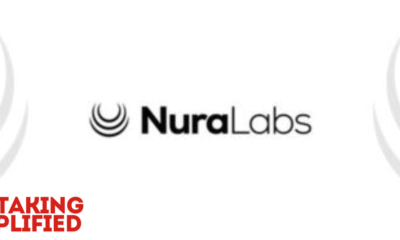Innovations
Will AI Take Your Job? The Truth About Automation and Employment

Artificial intelligence (AI) has become a defining force in the 21st-century labour market. From generative AI tools like ChatGPT and Claude to automation in manufacturing and logistics, AI is reshaping industries, economies, and careers. But as the technology evolves at breakneck speed, a pressing question looms large: Will AI take your job?
Recent reports by the World Economic Forum, Goldman Sachs, and McKinsey Global Institute indicate that AI’s impact on employment is both significant and nuanced. While automation will replace some roles, it will also create new opportunities, demanding a shift in skill sets rather than a wholesale collapse of the workforce.
What the Data Shows: Job Losses vs Job Creation
According to the World Economic Forum’s Future of Jobs Report 2023, it is estimated that AI and other technologies will displace 85 million jobs by 2025 but they will also create 97 million new roles, resulting in a net gain of 12 million jobs globally (World Economic Forum).
A Goldman Sachs report (2023) projected that generative AI could affect 300 million full-time jobs globally, automating up to 25% of the work in the U.S. and Europe. However, this disruption will likely lead to productivity boosts and GDP growth over time (Goldman Sachs).
Industries Most at Risk
Not all jobs are equally vulnerable. Here’s a breakdown of sectors facing the highest levels of disruption:
1. Administrative and Clerical Roles
Routine-heavy roles such as data entry clerks, payroll clerks, and accounting assistants are among the most at risk. Generative AI tools like GPT-4, Microsoft Copilot, and Google Gemini can now handle document generation, financial summaries, and basic analysis.
The U.S. Bureau of Labor Statistics projects a decline of 8% in office and administrative support jobs by 2032.
2. Manufacturing and Warehousing
Robotics and AI-powered logistics systems are rapidly replacing manual labor in factories and fulfillment centers. Amazon uses over 750,000 robots in its operations, and companies like Tesla and Foxconn are leading the charge in AI-driven production lines.
3. Customer Service
Chatbots, voice assistants, and conversational AI are replacing live agents. By 2027, Gartner predicts that chatbots will become the primary customer service channel for 25% of organizations.
Jobs That Are Safe or Even Thriving Because of AI
1. Technology and AI Development
Demand is soaring for AI engineers, machine learning specialists, and data scientists. LinkedIn’s 2024 Jobs on the Rise report identified “AI Product Manager” and “Prompt Engineer” as two of the fastest-growing job titles.
2. Healthcare
While AI is automating diagnostics, human roles in patient care, nursing, and therapy remain irreplaceable. AI supports rather than replaces professionals in this field.
3. Education and Training
As companies reskill their workforce, the demand for educators, curriculum designers, and AI literacy trainers is on the rise.
According to McKinsey, AI will create demand for over 149 million new tech-oriented jobs by 2025
Real-World Examples: Human + AI in Action
- Accenture integrated AI tools across departments, automating 40% of internal IT support tasks. Instead of layoffs, staff were upskilled into higher-level decision-making and supervision roles.
- IBM announced it would pause hiring for roles that AI could replace but simultaneously launched a massive upskilling campaign for 30,000 employees in AI ethics, cloud computing, and cybersecurity.
- Duolingo, an AI-powered language app, laid off some human translators, choosing to rely more heavily on GPT-4 for content creation. However, it also grew its engineering team and invested in human oversight to improve accuracy and personalization.
Geographic Impact
The effects of AI will vary globally:
- Developed nations may experience faster job displacement due to greater adoption of AI tech but will also benefit from high-tech job creation.
- Developing countries could face slower displacement, but with fewer resources for reskilling, may encounter greater long-term workforce disruption unless proactive policies are adopted.
The Upskilling Imperative
One of the most urgent needs is upskilling the current workforce. According to a 2024 LinkedIn Learning Report, 64% of professionals are already using AI tools on the job, but only 28% feel they have adequate training.
The World Economic Forum estimates that 50% of all employees will need reskilling by 2025.
Governments and companies are responding:
- Amazon’s Career Choice Program offers free training in data analytics and IT support.
- Google’s Career Certificates program helps individuals gain credentials in AI, data science, and cybersecurity.
Policy and Regulation
The push to regulate AI has picked up pace globally:
- The European Union passed the AI Act, the world’s first major AI regulation, requiring companies to assess AI risks before deployment.
- U.S. President Joe Biden signed an executive order in 2023 to establish guidelines for responsible AI development and to fund worker reskilling programs (White House Briefing).
The Human Advantage
Despite AI’s exponential growth, many roles require creativity, empathy, ethical judgment, and critical thinking, traits machines cannot replicate easily.
A recent MIT study concluded that while AI could outperform humans in specific, narrow tasks, human-AI collaboration consistently produced the best outcomes across industries like marketing, software development, and design.
Conclusion: Adapt or Be Replaced?
AI will almost certainly reshape the job market, but the narrative of universal job loss is overblown. Instead, the future of work will be defined by how well societies adapt, how quickly businesses reskill workers, and how thoughtfully regulations are enforced.
The jobs of the future will not simply be “non-AI” jobs. They will be jobs done with AI.
For more information, refer to sources:
- https://www.weforum.org/reports/future-of-jobs-2023/
- https://www.goldmansachs.com/intelligence/pages/generative-ai-could-raise-global-gdp-by-7-percent.html
- https://www.mckinsey.com/mgi/overview
- https://economicgraph.linkedin.com/
- https://www.forbes.com/
- https://newsroom.accenture.com/
-

 Press Release4 days ago
Press Release4 days agoNura Labs Files Revolutionary Patent: AI-Powered Wallet Solves the $180 Billion Crypto Staking Complexity Crisis
-

 Press Release2 days ago
Press Release2 days agoGlobal Compound Feeds and Additives Industry Report: Market Expansion and Competitive Insights to 2035
-

 Technology2 days ago
Technology2 days agoWhat to Know Before Switching Cell Phone Network Services in 2025
-

 Press Release13 hours ago
Press Release13 hours agoCrypto WINNAZ Launches First On-Chain Yield Engine for Meme Coins, Enabling 20x–300x Returns


















